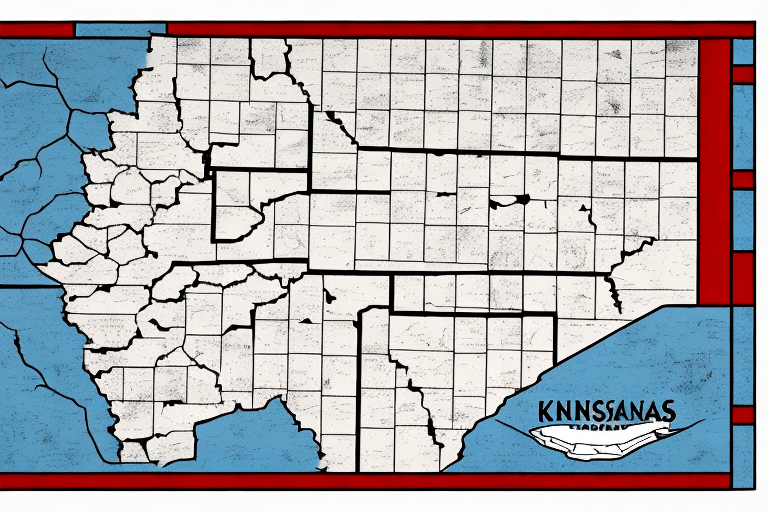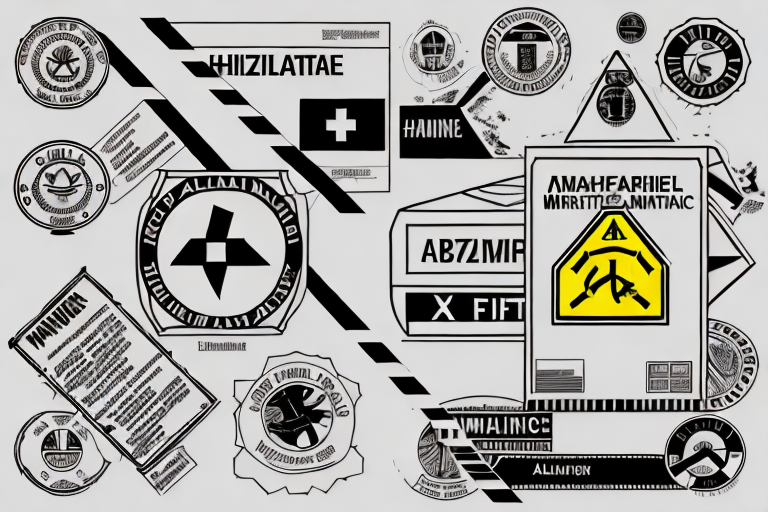Dangerous goods are items or substances that are potentially hazardous to human health and safety, to property, or to the environment. If you need to ship dangerous goods, it is essential to understand the regulations that govern such shipments, as well as to take the necessary precautions to ensure that your shipment arrives safely and securely at its destination. Fortunately, UPS Worldship 2016 provides an efficient and reliable way to ship dangerous goods. In this article, we will take an in-depth look at how to safely ship dangerous goods with UPS Worldship 2016.
Understanding the Regulations for Shipping Dangerous Goods
Before you can ship dangerous goods, you need to be aware of the rules and regulations that govern the safe transportation of hazardous materials. These regulations are in place to protect the public, workers, and the environment from potential harm. The two main sets of regulations that you need to be familiar with are:
- International Air Transport Association (IATA) Dangerous Goods Regulations
- Code of Federal Regulations (CFR) Title 49, also known as the Hazardous Materials Regulations (HMR).
It is important to note that the regulations for shipping dangerous goods may vary depending on the mode of transport (air, ground, or sea) and the country of origin and destination. Therefore, it is crucial to consult the relevant regulators and organizations to ensure that you are in compliance with the applicable regulations.
When shipping dangerous goods, it is also important to properly label and package the materials. This includes using appropriate warning labels, placards, and packaging materials that are designed to withstand the hazards of the materials being shipped. Failure to properly label and package dangerous goods can result in fines, legal action, and even accidents that can cause harm to people and the environment.
In addition to following regulations and properly labeling and packaging dangerous goods, it is also important to train employees who handle these materials. This includes providing training on the hazards of the materials, proper handling procedures, and emergency response protocols. By properly training employees, you can help prevent accidents and ensure that everyone involved in the shipping process is aware of the potential risks and how to mitigate them.
The Importance of Proper Packaging for Dangerous Goods
The packaging of dangerous goods plays a critical role in ensuring the safe transportation of hazardous materials. Properly packaging hazardous materials prevents leakage during transport and mitigates any risk to the people or environment if an accident does occur.
When selecting the packaging for hazardous materials, there are different considerations that need to be accounted for. Packaging for liquid dangerous goods must be durable and leak-proof. The packaging must also be capable of withstanding punctures, vibrations, and drops in case of accidents. The packaging used must also meet the requirements set by regulatory agencies.
Another important consideration when selecting packaging for dangerous goods is the type of material being transported. For example, radioactive materials require specialized packaging that can shield against radiation. Similarly, corrosive materials require packaging that can resist corrosion and prevent leaks.
It is also important to properly label and mark the packaging of dangerous goods. This helps to ensure that the materials are handled and transported correctly, and that emergency responders are aware of the potential hazards in case of an accident. Proper labeling and marking also helps to prevent the accidental mixing of incompatible materials during transport.
How to Classify Your Dangerous Goods for Shipping
Dangerous goods are classified according to the type of hazard that they present. It is essential to properly classify your dangerous goods, as the classification will determine how the shipment must be packed, labeled, and transported. Classification is usually determined by testing or recognized calculations of tested properties.
You can find a list of dangerous goods classification codes under the IATA Dangerous Goods Regulations and CFR 49 Part 172.101. Should you need help with classifying your dangerous goods, there are third-party compliance consultancies that specialize in these matters.
It is important to note that the classification of dangerous goods is not a one-time process. The classification must be reviewed and updated regularly to ensure that it is still accurate and up-to-date. This is especially important if there are any changes to the product or if new regulations are introduced.
Additionally, it is crucial to ensure that all personnel involved in the handling and transportation of dangerous goods are properly trained and aware of the hazards associated with the goods. This includes not only the shippers and carriers but also the recipients of the goods.
Choosing the Right Shipping Method for Your Dangerous Goods
When shipping dangerous goods, you need to consider the mode of transport and the type of goods being transported. Different modes of transport have varying regulatory requirements and may also require different types of packaging. You should evaluate the risks, costs, and advantages of each shipment method before opting for a particular one.
UPS Worldship 2016 provides a range of shipment methods, including air, ground, and sea. This will allow you to choose the best option tailored to your needs.
It is important to note that some countries have restrictions on the transportation of certain dangerous goods. For example, lithium batteries are prohibited from being transported by air in some countries. It is crucial to research and comply with the regulations of the countries you are shipping to and from to avoid any legal or safety issues.
Step-by-Step Guide to Using UPS Worldship 2016 for Shipping Dangerous Goods
Using UPS Worldship 2016 for shipping dangerous goods is straightforward. The following is a step-by-step guide on how to use Worldship 2016 for this purpose:
- Select the type of dangerous goods you wish to ship.
- Enter the required information, such as package dimensions, weight, and quantity.
- Select the correct packaging that will comply with the dangerous goods regulations.
- Classify the dangerous goods according to their hazard class.
- Choose the appropriate shipping method for the dangerous goods.
- Print the necessary documents for your shipment.
- Properly label the packages with the recommended warnings and instructions.
Following the steps above will ensure that your shipment complies with the relevant regulations and arrives safely at its destination.
It is important to note that not all dangerous goods can be shipped through UPS Worldship 2016. Some hazardous materials, such as explosives and radioactive materials, require special handling and cannot be shipped through standard shipping methods. It is important to check the regulations and restrictions for the specific type of dangerous goods you wish to ship before using Worldship 2016.
In addition, it is recommended to undergo training on the proper handling and shipping of dangerous goods. UPS offers training courses and resources to help ensure that you are properly equipped to handle and ship hazardous materials. By taking the time to properly train yourself and your staff, you can help ensure the safety of your shipments and those handling them.
Tips for Completing Shipping Documentation for Dangerous Goods
Shipping documentation is a critical component of the shipping process for dangerous goods. The documentation enables the proper classification, identification, and safe transport of hazardous materials throughout the supply chain. The following are some tips to ensure that your shipping documentation is complete:
- Leverage templates provided by UPS Worldship 2016
- Ensure that the documentation is accurate and complete
- Attach the required documents including, but not limited to bill of lading and shipper's declaration from UPS
- Ensure that the paperwork is signed and dated by the authorized personnel.
It is important to note that different countries have different regulations and requirements for shipping dangerous goods. Therefore, it is crucial to research and understand the specific regulations of the destination country before completing the shipping documentation.
In addition, it is recommended to provide clear and concise instructions to the carrier regarding the handling and transport of the dangerous goods. This can include information on the proper storage, handling, and emergency response procedures in case of an incident during transport.
Best Practices for Labeling and Marking Your Dangerous Goods Packages
It is essential to properly label and mark your packages when shipping dangerous goods. Proper labeling and marking enable quick identification of the hazardous materials and their associated risks. The following practices should be observed when labeling and marking your packages:
- Adhere to the correct regulations when choosing the appropriate labeling and marking
- Ensure that the labels and markings are not covered or obscured
- Provide the correct quantity and type of required shipping labels
- Add additional cautionary labels where necessary.
It is also important to ensure that the labels and markings are clear and legible. This can be achieved by using high-quality labels and markers that are resistant to fading and smudging. Additionally, it is recommended to use labels and markings that are in a contrasting color to the package to ensure maximum visibility. By following these best practices, you can help ensure the safe and efficient transport of dangerous goods.
Handling and Transporting Dangerous Goods Safely and Securely
The safe handling and transport of dangerous goods require specialized training, equipment, and procedures. It is essential to work with experienced personnel and trained carriers to ensure the safe transport of hazardous materials. As a third party, UPS Worldship 2016 adheres to the regulations and standards of safe transport. To provide additional assurance, UPS Dangerous Goods Support package offers consultation and expertise on this.
One of the critical aspects of handling and transporting dangerous goods is proper labeling. All hazardous materials must be labeled correctly to ensure that they are handled and transported safely. The labels must include the name of the hazardous material, the hazard class, and the identification number. It is also essential to ensure that the labels are visible and not damaged during transport.
In addition to labeling, it is crucial to have proper packaging for dangerous goods. The packaging must be designed to withstand the hazards associated with the material being transported. The packaging must also be properly sealed to prevent leaks or spills during transport. It is essential to follow the packaging requirements outlined in the regulations to ensure the safe transport of hazardous materials.
What to Do in Case of an Emergency During Shipping of Dangerous Goods
In case of an emergency during the shipping of dangerous goods, you should take the necessary steps to ensure the safety of personnel and the environment. These include:
- Immediately contacting the emergency response teams such as National Spills and Emergency Centre (NSEC) and the carrier.
- Evacuating the area, if deemed necessary
- Providing accurate and complete information to relevant stakeholders.
Conclusion
Shipping dangerous goods requires attention to detail, compliance with regulations, and a commitment to safety. With UPS Worldship 2016, the process is simplified, and you can be assured that your shipment is safe and secure at every stage of the transportation process. The tips and techniques listed above should be used as a guide to ensure that your shipment meets all the regulatory requirements and arrives safely at its destination.









